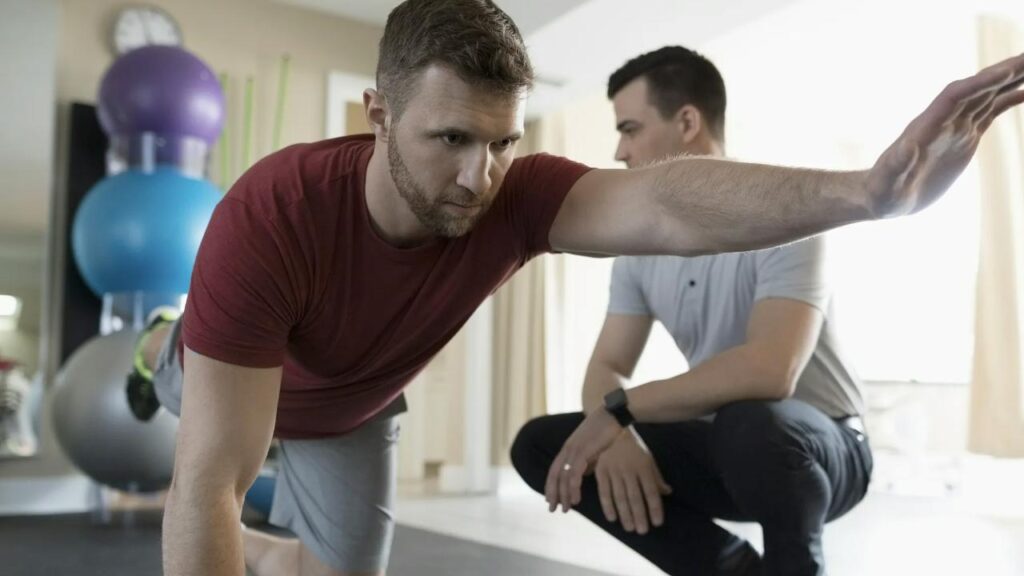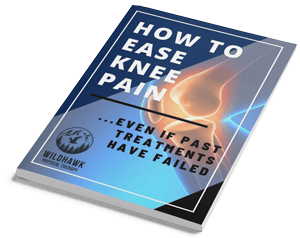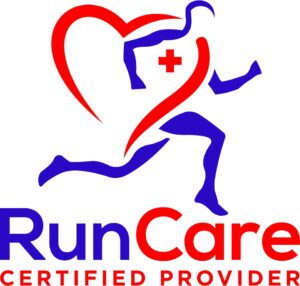
Introduction
Welcome to our in-depth guide on managing hip pain during CrossFit workouts. We understand hip pain can get in the way of performing your best during your workouts. CrossFit is an intense and dynamic form of exercise that engages various muscle groups, including those around the hip joint. Unfortunately, this intensity can sometimes lead to hip discomfort or pain. In this blog post, we’ll explore the common causes of hip pain in CrossFit enthusiasts, strategies to mitigate discomfort, and how WildHawk Physical Therapy can support you in achieving your fitness goals while maintaining hip health.
Understanding the Causes of Hip Pain in CrossFit
CrossFit is known for its high-intensity, varied movements that challenge the entire body. While this is excellent for overall fitness, it can also contribute to hip pain if certain factors are not considered. Let’s delve into some common causes:
- Improper Form: Executing movements with incorrect form or technique can put undue stress on the hip joint, leading to pain and potential injuries.
- Overuse and Repetitive Movements: Repeatedly performing the same movements, such as squats or lunges, without adequate rest can strain the hip muscles and joints.
- Muscle Imbalances: Weakness or imbalances in the muscles around the hip can alter joint mechanics, increasing the risk of pain and discomfort.
- Inadequate Warm-Up: Insufficient warm-up before a CrossFit session can leave the hip muscles tight and more susceptible to strain during intense exercises.
The Role of Physical Therapy in CrossFit Training
Physical therapy plays a crucial role in addressing and preventing hip pain in CrossFit enthusiasts. Here’s how it can enhance your training experience:
Comprehensive Assessment
A skilled physical therapist will conduct a thorough assessment to identify the specific factors contributing to your hip pain. This may involve analyzing your movement patterns, muscle imbalances, and joint mechanics.
Customized Exercise Prescription
Based on the assessment, your physical therapist will create a personalized exercise plan to address your unique needs. This plan may include targeted exercises to strengthen weak muscles, improve flexibility, and correct movement patterns.
Technique Correction
Your physical therapist will guide you in correcting your form and technique during CrossFit movements. Proper alignment and movement patterns are crucial for preventing hip pain and optimizing your performance.
Preventive Strategies
In addition to addressing existing hip pain, physical therapy provides you with tools and strategies to prevent future issues. This may involve specific warm-up routines, cooldown exercises, and recommendations for rest and recovery.
Expanding on Preventive Strategies:
- Dynamic Warm-Up Routine:
Develop a dynamic warm-up routine that specifically targets the muscles around the hip joint. Incorporate exercises such as leg swings, hip circles, and dynamic lunges to increase blood flow and flexibility. - Cooldown and Stretching:
Dedicate time at the end of your CrossFit session to cooldown exercises and static stretching. Focus on stretches that address the hip flexors, hamstrings, and glutes. This helps prevent muscle tightness and promotes flexibility. - Foam Rolling for Myofascial Release:
Integrate foam rolling into your routine for myofascial release. Rolling over the hip muscles helps release tension and improve mobility. Pay attention to areas like the IT band, quadriceps, and hip flexors. - Cross-Training and Rest Days:
Include cross-training activities that give your hip joints a break from high-impact movements. Activities like swimming, cycling, or yoga can provide a different form of exercise while allowing your hips to recover. - Strength Training for Hip Stability:
Implement targeted strength training exercises to enhance hip stability. Include exercises such as lateral leg raises, clamshells, and hip abductor/adductor exercises to build strength in the supporting muscles. - Nutrition and Hydration:
Maintain a balanced diet and stay adequately hydrated. Proper nutrition supports overall joint health, and hydration is essential for maintaining the elasticity of connective tissues around the hips. - Regular Monitoring and Adjustments:
Continuously monitor your training intensity and listen to your body. If you notice persistent discomfort, consider adjusting your workout routine or seeking guidance from a physical therapist for necessary modifications.

Managing Hip Pain During CrossFit Workouts
Now, let’s explore practical strategies for managing hip pain during CrossFit workouts:
- Modify Intensity and Volume
If you’re experiencing hip pain, consider modifying the intensity and volume of your workouts. This could involve reducing the weight, decreasing the number of repetitions, or avoiding certain movements that exacerbate your discomfort.
- Incorporate Low-Impact Exercises
Include low-impact exercises in your routine to give your hip joints a break. Activities like swimming, cycling, or rowing can help maintain cardiovascular fitness without putting excessive stress on the hips.
- Focus on Mobility and Flexibility
Dedicate time to improve hip mobility and flexibility. Incorporate dynamic stretches and mobility exercises into your warm-up routine to prepare your hip joints for the demands of CrossFit movements.
- Strengthen Supporting Muscles
Target the muscles around the hip joint to build strength and stability. Exercises such as clamshells, lateral leg raises, and hip bridges can help address muscle imbalances and provide better support during CrossFit workouts.
- Listen to Your Body
Pay attention to signals from your body. If you experience persistent or increasing hip pain, it’s crucial to listen to your body’s cues and give yourself adequate time to rest and recover.
WildHawk Physical Therapy: Your Partner in Pain-Free CrossFit Training
At WildHawk Physical Therapy, we understand the unique demands of CrossFit training and the importance of addressing hip pain promptly. Our team of skilled physical therapists is committed to helping you achieve your fitness goals while maintaining optimal hip health.
FAQ Section
Frequently Asked Questions:
Can I continue CrossFit training if I have hip pain?
Yes, with proper guidance and modifications, you can continue CrossFit training. Consulting with a physical therapist can help address the underlying causes of hip pain and develop a tailored plan for your workouts.
How long does it take to see improvements with physical therapy for hip pain?
The timeline for improvement varies depending on the severity of the hip pain, adherence to the treatment plan, and individual factors. Your physical therapist will work with you to set realistic expectations and milestones for your recovery.
Are there specific exercises that worsen hip pain in CrossFit?
Certain exercises, such as deep squats or movements that involve excessive hip flexion, may exacerbate hip pain. Your physical therapist will help identify problematic movements and provide alternatives or modifications.
In conclusion, managing hip pain during CrossFit workouts involves a multifaceted approach, including proper form, targeted exercises, and listening to your body. WildHawk Physical Therapy located in Asheville, NC is here to support you in your fitness journey, ensuring a pain-free and fulfilling CrossFit experience. If you’re dealing with hip pain or looking to optimize your training, reach out to our team for personalized care and expert guidance. Your health and fitness are our priorities.









